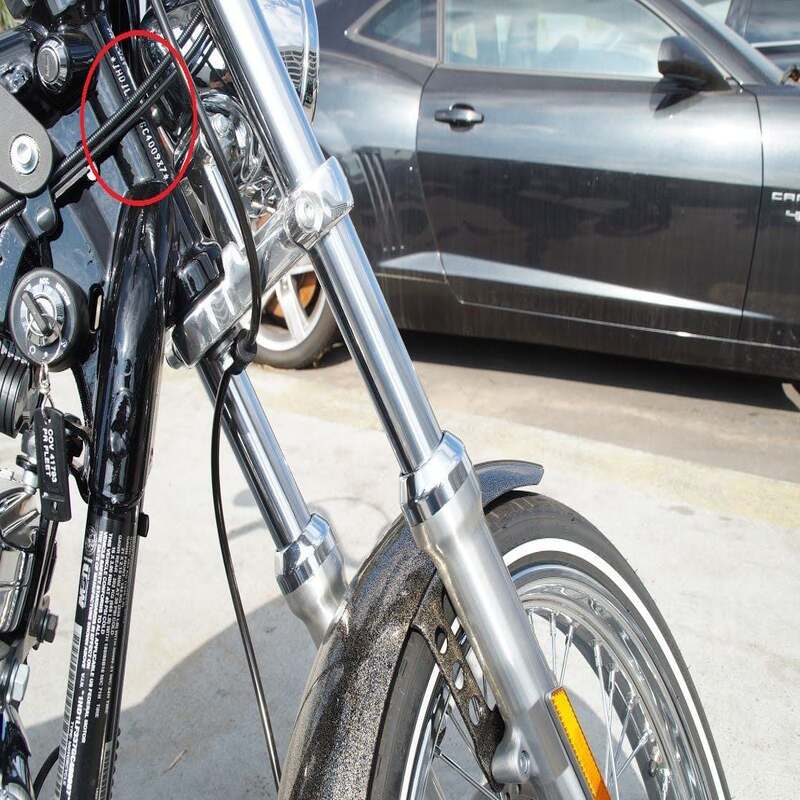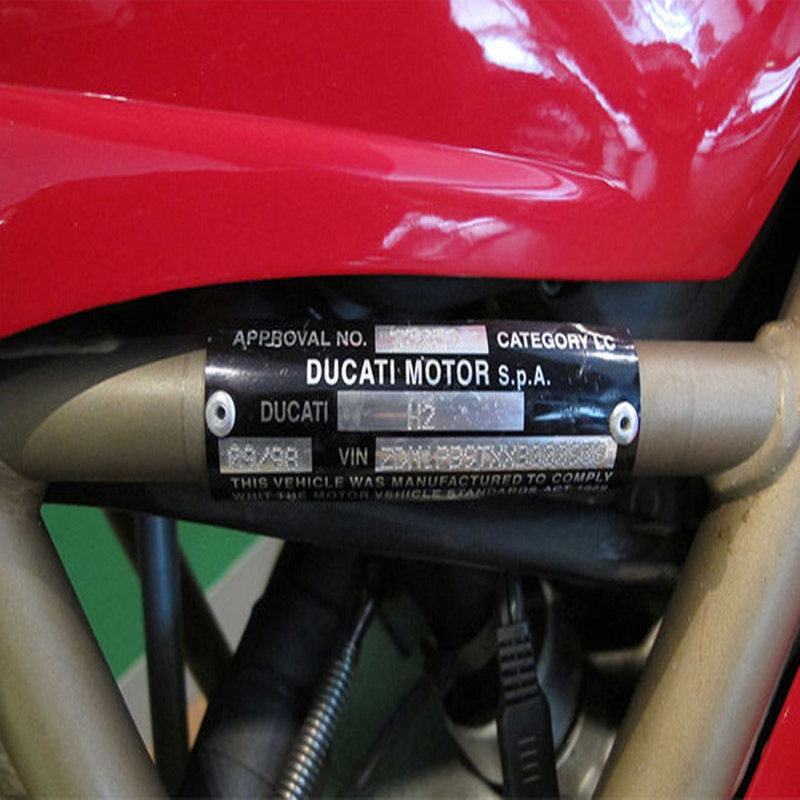The Vehicle Identification Number, commonly known as the VIN, is a unique code used to identify individual vehicles, including motorcycles. This critical identifier consists of 17 alphanumeric characters that serve a multitude of purposes, from tracking recalls to ensuring legal ownership. Therefore, understanding the structure, significance, and applications of the motorcycle VIN is essential for owners, buyers, and enthusiasts. This comprehensive guide explores the anatomy of the VIN, its practical uses, and how to utilize VIN information effectively. By following these insights, you can make informed decisions related to motorcycle purchases, maintenance, and legal compliance.
Anatomy of a Motorcycle VIN
A motorcycle VIN is a complex code that captures a wealth of information about the vehicle. Therefore, exploring its structure helps understand the valuable data embedded within each character.
World Manufacturer Identifier (WMI)
The first three characters of the VIN form the World Manufacturer Identifier (WMI). The WMI uniquely identifies the manufacturer of the motorcycle. The first character typically represents the country of origin, while the second and third characters indicate the specific manufacturer. For example, a VIN starting with “1HD” signifies a Harley-Davidson motorcycle manufactured in the United States. This segment is crucial for recognizing the vehicle’s origin and manufacturer at a glance. Therefore, recognizing the WMI underscores its importance in the initial identification process.
Vehicle Descriptor Section (VDS)
The next six characters, known as the Vehicle Descriptor Section (VDS), provide detailed information about the motorcycle’s model, type, and engine size. These characters are standardized by each manufacturer, allowing them to convey specific data about the vehicle’s attributes. The VDS may include information about the body style, engine configuration, and safety features. This section helps distinguish between different models and variations produced by the same manufacturer. Therefore, understanding the VDS highlights its role in providing detailed specifications about the motorcycle.

Practical Uses of Motorcycle VIN
The motorcycle VIN serves various practical purposes that are essential for ownership, maintenance, and legal compliance. Therefore, exploring these uses helps appreciate the wider applicability of VIN information.
Tracking Recalls and Technical Service Bulletins
One of the primary uses of the motorcycle VIN is tracking recalls and technical service bulletins (TSBs). Manufacturers use the VIN to identify vehicles affected by recalls due to safety concerns or defective components. By entering the VIN into a recall database, owners can quickly determine if their motorcycle requires any urgent repairs. Similarly, TSBs provide important information about recurring issues and recommended service procedures. Keeping track of recalls and TSBs ensures the motorcycle remains safe and well-maintained. Therefore, recognizing the significance of recall tracking emphasizes the role of the VIN in vehicle safety.
Verifying Legal Ownership and History
The VIN is also instrumental in verifying legal ownership and the history of a motorcycle. Online services allow prospective buyers to perform VIN checks, revealing important details such as previous owners, accident history, and mileage records. This transparency helps buyers avoid purchasing stolen or damaged motorcycles and ensures they make informed decisions. Furthermore, the VIN is crucial for registering the vehicle with the relevant authorities, ensuring legal compliance. Therefore, understanding the importance of legal verification highlights the VIN’s role in fostering trust and transparency in motorcycle transactions.
How to Locate the Motorcycle VIN
Locating the VIN on a motorcycle is the first step in accessing its valuable information. Therefore, exploring common VIN locations helps identify where to find this critical code on your bike.
On the Frame
One of the most common places to find the VIN on a motorcycle is engraved on the frame. Typically, the VIN is located on the steering neck, which is the part of the frame near the front fork. Depending on the manufacturer, it may also be found on other parts of the frame, such as the side or beneath the seat. Ensuring the VIN is legible and intact on the frame is crucial for verification and legal purposes. Therefore, recognizing the primary VIN locations on the frame underscores their accessibility.
On the Engine
Another common location for the motorcycle VIN is on the engine. Some manufacturers engrave the VIN on the engine casing to provide an additional point of identification. While the VIN on the frame is usually the primary reference, the engine VIN can serve as a secondary confirmation. Cross-referencing both locations ensures consistency and helps detect any tampering or modifications. Therefore, understanding the significance of the engine VIN highlights its role in comprehensive vehicle identification.

How to Decode a Motorcycle VIN
Decoding a motorcycle VIN involves interpreting each segment to extract the embedded information. Therefore, exploring the decoding process helps unravel the detailed data packed into the VIN.
Vehicle Identifier Section (VIS)
The final eight characters form the Vehicle Identifier Section (VIS). The VIS includes the unique serial number assigned to each motorcycle, ensuring its individual identification. This part of the VIN also contains the model year, manufacturing plant, and assembly line sequence. By analyzing the VIS, owners can pinpoint the exact production specifications and sequence of their motorcycle. It adds another layer of uniqueness, distinguishing one vehicle from others with the same VDS. Therefore, recognizing the importance of the VIS underscores its role in precise identification.
Utilizing Online VIN Decoders
One of the simplest ways to decode a motorcycle VIN is by using online VIN decoder tools. These tools allow you to enter the 17-character VIN and automatically generate a detailed report. The report typically includes information about the manufacturer, model, engine specifications, and production year. Online VIN decoders provide an efficient and user-friendly method for accessing detailed motorcycle data without manual interpretation. Therefore, understanding the utility of online VIN decoders highlights their convenience and effectiveness.
Benefits of Knowing Your Motorcycle VIN
Knowing your motorcycle VIN and understanding how to use it provides several benefits. Therefore, exploring these advantages underscores the practical value of VIN awareness.
Enhanced Security
Knowing your motorcycle VIN enhances security by providing a unique identifier that can be used to track and recover the vehicle in case of theft. Law enforcement agencies and insurance companies use the VIN to trace stolen motorcycles and verify ownership. By keeping a record of your VIN and reporting it promptly in case of theft, you increase the chances of recovering your motorcycle. Therefore, recognizing the security benefits underscores the importance of VIN awareness in combating theft.
Informed Maintenance and Repairs
Having detailed information about your motorcycle, accessible through the VIN, facilitates better maintenance and repairs. Manufacturers provide specific service guidelines and parts information based on the VIN, ensuring that the correct procedures and components are used. This precision helps maintain the performance and longevity of your motorcycle, avoiding unnecessary issues due to improper servicing. Therefore, understanding the benefits for maintenance underscores the VIN’s role in enhancing vehicle care.
Common Misconceptions About Motorcycle VIN
There are several misconceptions about motorcycle VINs that can lead to confusion. Therefore, exploring these misconceptions helps clarify crucial aspects of VIN usage and interpretation.
All VINs are the Same
A common misconception is that all VINs are the same across different types of vehicles. While the structure of the VIN is standardized to 17 characters, the specific codes and their meanings vary between manufacturers and vehicle types. For example, the same sequence of characters may represent different details on a car versus a motorcycle. Recognizing these differences ensures accurate interpretation and prevents errors. Therefore, understanding the specificity of VINs highlights the importance of context in VIN analysis.
Decoding VINs is Complicated
Another misconception is that decoding VINs is a complicated process requiring expert knowledge. While manual decoding can be complex, numerous online tools simplify the process by automatically extracting and interpreting the information. These tools make it easy for anyone to access detailed vehicle data without needing technical expertise. Therefore, recognizing the availability of user-friendly options emphasizes their role in making VIN decoding accessible to all.

Future Trends in VIN Technology
The field of vehicle identification is continually evolving, driven by advancements in technology. Therefore, exploring future trends helps anticipate developments in VIN-related innovations.
Blockchain for VIN Management
One of the emerging trends is the use of blockchain technology for VIN management. Blockchain offers a decentralized and secure way to store and verify VIN data, enhancing transparency and reducing fraud. By creating an immutable record of a vehicle’s history, blockchain ensures that all changes and transactions are traceable. This innovation holds potential for transforming how VIN data is managed, providing greater trust and security in vehicle transactions. Therefore, recognizing the potential of blockchain underscores its role in the future of VIN technology.
Integration with IoT
The integration of VIN with Internet of Things (IoT) devices is another promising trend. IoT-enabled motorcycles can continuously record and transmit data related to performance, maintenance, and usage, all linked to the VIN. This real-time data provides valuable insights for owners, manufacturers, and service providers, enhancing predictive maintenance and overall vehicle management. Therefore, understanding the significance of IoT integration highlights its role in advancing vehicle identification and management.
Conclusion
Understanding motorcycle VIN is essential for effective vehicle identification, legal compliance, and maintenance. Proper knowledge ensures the utilization of this unique identifier for various practical purposes.
Exploring the anatomy of the VIN, recognizing its uses in tracking recalls and verifying ownership, and identifying locations on the motorcycle provides valuable insights into its structure. Recognizing the benefits of enhanced security and informed maintenance, understanding the utility of online decoders, and debunking common misconceptions further enriches your understanding.
By engaging with future trends in technology and acknowledging the role of VIN in security and vehicle care, you can ensure that your motorcycle remains well-managed and legally compliant. Therefore, whether you are an owner, buyer, or enthusiast, understanding these aspects offers practical and valuable insights. Embrace the opportunity to leverage the full potential of your motorcycle VIN, knowing you have the knowledge and resources to make informed decisions!



